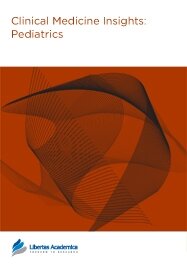

Publication Date: 06 Oct 2008
Journal: Clinical Medicine Insights: Pediatrics

Division of Pediatrics, Department of Clinical and Experimental Medicine, Faculty of Health Sciences, Linköping University, Sweden.
Abstract
Body dissatisfaction has been related to low self-esteem and depression in adolescents. With regard to the current world wide rise in childhood obesity and common stigmatization of adults and children with obesity, easy to use and cost effective measurements of body dissatisfaction would be helpful in epidemiological research. In the current study, detailed data on body measurements with regard to perceived and ideal body size and body dissatisfaction, as measured with the figure preference task, are presented for a population based sample of 3837 children. Perceived body size correlations to weight, body mass index [BMI], and waist circumference were between 0.41 and 0.54; and to height between 0.12 and 0.21. Odds ratios for lower self-esteem increased with increase in body dissatisfaction. Gender differences in body dissatisfaction were present but not found in relation to self-esteem. It is concluded that the figure preference task yields valuable information in epidemiological studies of children as young as 7.5 years of age. It is argued, that the figure preference task is an additional measurement which theoretically relates to psychological stress in childhood.
PDF (406.06 KB PDF FORMAT)
RIS citation (ENDNOTE, REFERENCE MANAGER, PROCITE, REFWORKS)
BibTex citation (BIBDESK, LATEX)

I had a great experience publishing our paper in Clinical Medicine Insights: Oncology. The review was prompt and fair and once it was accepted with the revisions, the editorial office was very clear and helpful with updates on the progress at each step of the publication process. I had prompt email responses to my questions. I will definitely try to publish more papers in this journal in the future. Keep up the good work. ...

All authors are surveyed after their articles are published. Authors are asked to rate their experience in a variety of areas, and their responses help us to monitor our performance. Presented here are their responses in some key areas. No 'poor' or 'very poor' responses were received; these are represented in the 'other' category.See Our Results
Copyright © 2013 Libertas Academica Ltd (except open access articles and accompanying metadata and supplementary files.)
FacebookGoogle+Twitter
PinterestTumblrYouTube